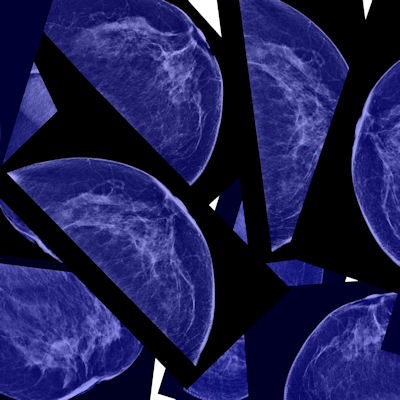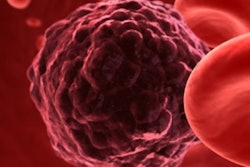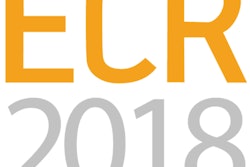
Which factor -- screening or treatment -- has been behind the sharp reduction in breast cancer mortality over the past several decades? A new study published January 9 in the Journal of the American Medical Association found that the answer is simple: both.
Researchers found that the combination of advances in mammography screening and improvements breast cancer treatment reduced breast cancer mortality by 49% in 2012, compared with the number of deaths that would have occurred with no screening and no treatment. While the contributions of screening and treatment have shifted over the years, both have had a major positive effect in the fight to save women's lives.
The new findings are excellent news for breast cancer patients, said lead author Sylvia Plevritis, PhD, from Stanford University School of Medicine, in a JAMA statement.
"Advances in screening and treatment are saving patients' lives, and [our research] quantifies just how much of a difference these advances are making," she said.
New and improved
Breast cancer mortality has fallen over the past several decades in most developed countries that have implemented population-based breast screening. In the U.S., for example, the American Cancer Society's annual report on cancer released this month showed that the mortality rate from female breast cancer fell 39% from 1989 to 2015.
 Sylvia Plevritis, PhD, from Stanford University.
Sylvia Plevritis, PhD, from Stanford University.However, the reasons for that decline continue to be disputed. Skeptics of breast screening assert that most of the mortality reduction is due to the better treatments now available, rather than the effect of finding cancers earlier through screening.
Part of the problem is that no single national registry contains enough information to address the question of whether screening or treatment is having a bigger impact. What's more, most clinical trials don't consider the effects of both screening and treatment, the authors wrote.
In a 2005 study to which Plevritis contributed, researchers found that screening mammography and breast cancer treatment contributed equally to the reduction in breast cancer mortality from 1975 to 2000 (New England Journal of Medicine, October 27, 2005, Vol. 353:17, pp. 1784-1792). With the current work, Plevritis and colleagues from multiple centers wanted to analyze the effect since 2000 of recent changes in both mammography technology and treatment protocols on mortality rates.
The researchers used statistical models based on data from the Cancer Intervention and Surveillance Modeling Network (CISNET) that were updated with information from 2000 to 2012, including new data reflecting treatment advances in chemotherapy, hormone therapy, and the use of the drug trastuzumab, which targets a growth factor receptor overexpressed in some tumors (JAMA, January 9, 2018, Vol. 319:2, pp. 154-164).
The six models simulated mortality rates for four intervention scenarios:
- No screening or treatment (baseline mortality rate)
- Screening alone
- Treatment alone
- Combined screening and treatment
Plevritis and colleagues found that screening and treatment advances reduced breast cancer mortality rates between 2000 and 2012, with their effect increasing as time went on. In 2000, screening and treatment contributed to a 37% reduction in overall breast cancer mortality, compared with the estimated baseline mortality rate of no screening and adjuvant treatment interventions; of this decrease, screening contributed 44% and treatment contributed 56%.
In 2012, after changes in both screening technology and treatment regimens, screening and treatment produced a 49% reduction over no screening or treatment, with screening contributing 37% and treatment contributing 63% (31% from chemotherapy, 27% from hormone therapy, and 4% from trastuzumab).
| Impact of screening and treatment on breast cancer mortality | ||||
| 2000 | 2012 | |||
| Overall mortality reduction | 37% | 49% | ||
| Cause of mortality reduction (percent reduction) | Screening (44%) | Treatment (56%) | Screening (37%) | Treatment (63%) |
As for the molecular subtype of breast cancer, the researchers found that for ER-positive/ERBB2-positive cancer -- the most common type, with the most targeted treatment options -- 31% of the mortality decline was associated with screening and 69% was associated with treatment. For ER-negative/ERBB2-negative cancer, which has fewer treatment options, 48% of the mortality reduction was associated with screening and 52% with treatment, the researchers wrote.
| Effect of cancer subtype on mortality reduction in 2012 | ||
| Mortality reduction in 2012 | Screening | Treatment |
| Overall | 37% | 63% |
| By cancer molecular subtype | ||
| ER+/ERBB2- | 36% | 64% |
| ER+/ERBB2+ | 31% | 69% |
| ER-/ERBB2+ | 40% | 60% |
| ER-/ERBB2- | 48% | 52% |
Screening's significance
Yes, newer, molecularly targeted drugs are associated with a greater reduction in breast cancer mortality than screening, the authors noted. But it can't be denied that screening has had a significant effect in reducing breast cancer mortality, finding cancer at earlier stages and thus allowing for earlier and more effective treatment -- especially as new technology such as digital breast tomosynthesis (DBT) enters the clinical mainstream, Plevritis and colleagues wrote.
"[Our] results support findings that advances in mammography continue to contribute to reducing breast cancer mortality," the group wrote. "It will be important to update the analysis when there is sufficient evidence about the benefits of tomosynthesis or other emerging screening approaches."
Plevritis hopes this research will help radiologists and their colleagues to better develop personalized screening strategies, she told AuntMinnie.com.
"The radiology community is already recognizing that we want to move toward a risk-stratified screening paradigm, and that we can do that by collecting more data to help us not only predict which women are most susceptible to developing breast cancer, but also what subtype that cancer might be," she said.
The research group included Stanford University; the Dana-Farber Cancer Institute and Harvard Medical School, both in Boston; Erasmus Medical Center in Rotterdam, the Netherlands; Georgetown University Medical Center in Washington, DC; Albert Einstein College of Medicine in New York City; the University of Wisconsin in Madison; and MD Anderson Cancer Center in Houston.



















